How to land clients in a new industry
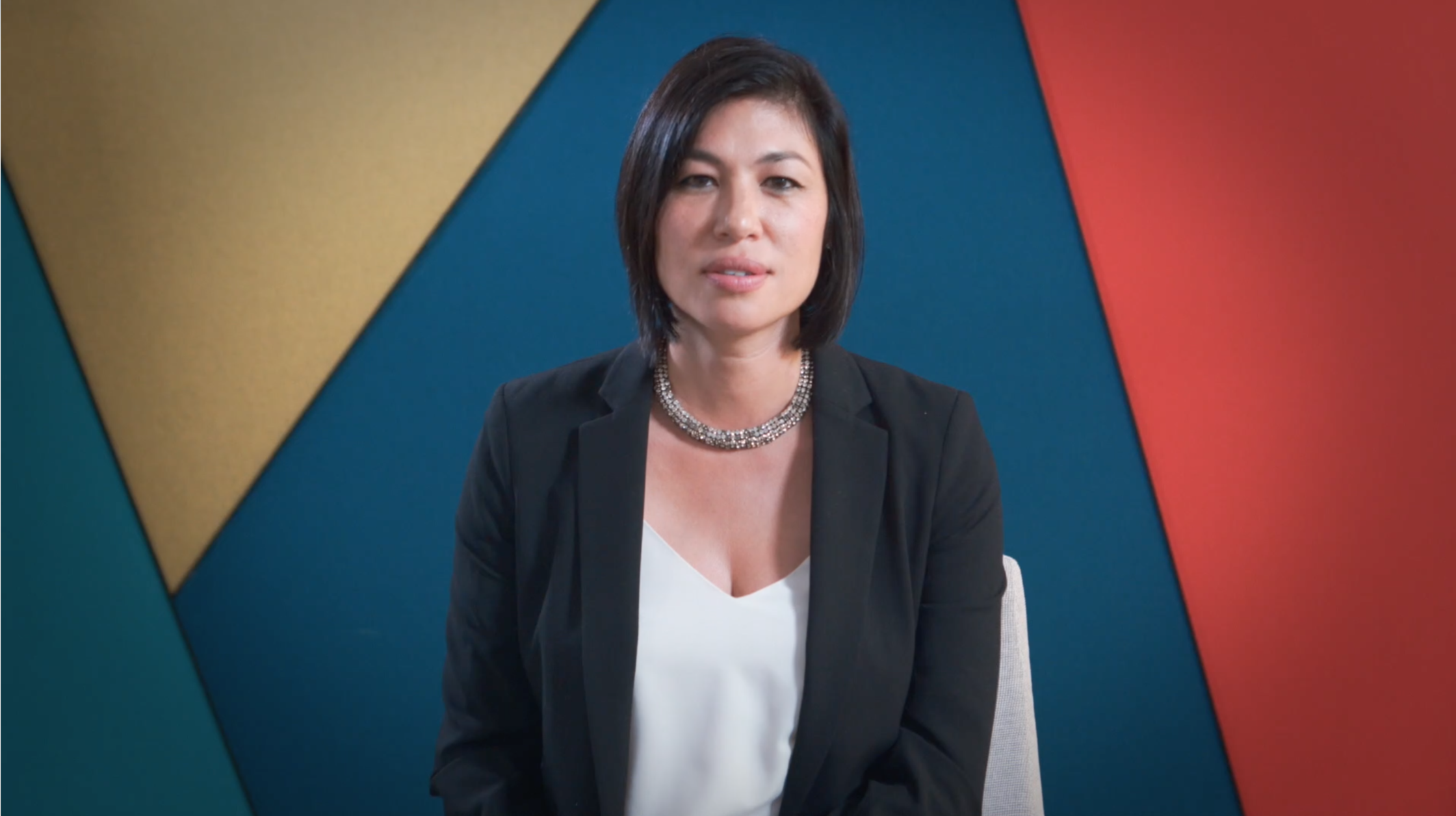
Tina Williams is the CEO of Informed XP, a UX design firm. She came to me with an opportunity.
"We have a virtual booth at a virtual conference and we need a video," she said. The most 2020 sentence I've ever heard. :)
The conference is all about identity and cybersecurity. The attendees are government agencies and government contractors, exactly the kinds of clients IXP wants to meet.
"What kind of government work have you done before?" I asked.
"Basically zero," said Tina.
Okay then! So my job is to craft a video that shows how this company's expertise is suited for this new customer segment, and tie in some kind of relevant work experience. Got it!
The video
Here's what we made!
Investing in a video like this gives you credibility with this new customer segment, which in turn gets you the sales meetings.
You are literally buying trust and credibility with a well produced video. So with a few grand and a few weeks time, you'll have something that will allow you to open doors that you didn't have access to before. This video is an asset that can be used for years.
The process
We only had about 2 weeks to pull this off. Here's some advice about making a video like this!
Spend a lot of time in preproduction
I think this was this company's first real video project so they didn't know what to expect. There was a lot of education involved and we spent a lot of time in preproduction coming up with questions and messaging ideas.
Anytime I work on a video with a new client, I have to quickly become an expert in their company and their industry. In a few days I need to be able to describe who they are, what they do, and who they do it for.
"Who they do it for" is the piece I've been focused more on lately. IXP hasn't done work for government clients before, so it's important that we create the appropriate personas and get in their heads.
One valuable exercise is this Ideal Customer Profile exercise from WebinarGrow. This is a great way to start figuring out who you're talking to.
Tina really bought into the personas exercise which made my job easy. We talked about the conference attendees who will watch the video, and the decision makers in government agencies and government contracting firms who actually hire vendors: executive directors, contract officers, program managers, etc.
I normally don't write an outline or storyboard for interview-based videos like this. I work with the client to create excellent questions. From the questions I know I'll be able to craft a compelling narrative. In every video I work on, I follow a general outline which I'll talk about later.
Don't use a teleprompter
Unless you're filming an online course or something that requires a higher level of accuracy, teleprompters make people stiff. If it looks like they're obviously reading something, it sucks!
Instead, I use a brilliant piece of kit called Eyedirect to achieve a to-the-camera interview. Here's a shot from another shoot where a client was the interviewer:
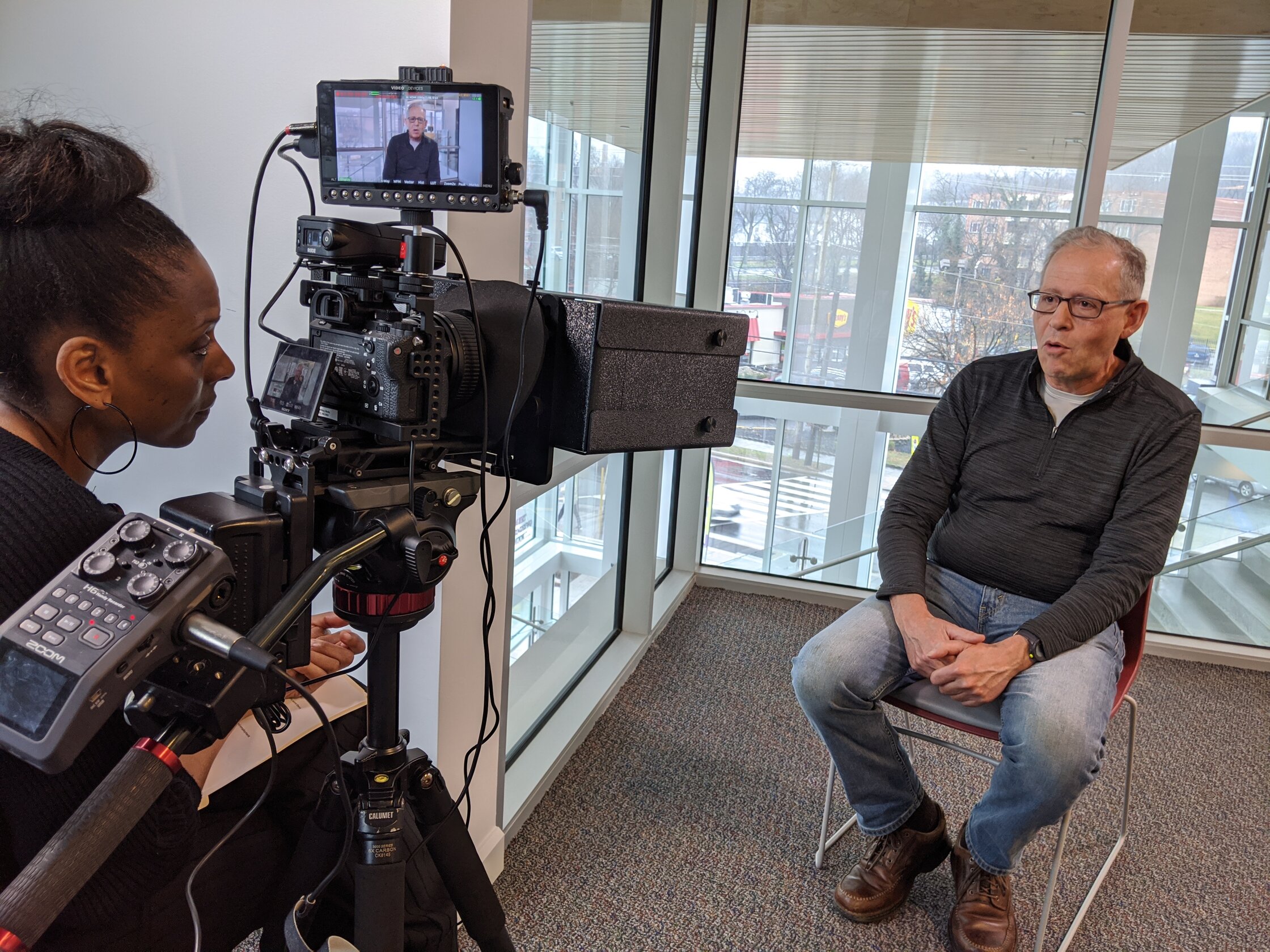
The interviewer looks at a mirror inside a box. The mirror is on a 45° angle and reflects against a piece of Edison glass.
The subjects sees the interviewers face in front of the camera lens.
Having the subject looking straight at the camera is crucial for compelling video in 2020. Why? A few reasons:
First, watching movies used to be a communal experience. But now, we're watching videos on our phones by ourselves. As the viewer, I want that interviewee to be talking to ME.
This is Marketing 101 - make your message about THEM. If I'm watching an off-camera interview, I'm thinking "Who are they talking to and why should I care?"
Second, if you're going to incorporate additional user-generated footage - like selfie videos, video calls, etc. - those are all going to be shot to-the-camera as well. It would be awkward if your professional interview was shot off-camera and the submitted videos are to-the-camera. You want whomever is talking to always be looking the same place for continuity.
Don't have $1k to spend on an Eyedirect? Just look straight at the camera when you're talking! It'll take some getting used to but I think it's 100% worth it for a modern look.
The narrative
Every video I make can be distilled down to three parts:
- What is the the problem and who has the problem? (I also sometimes call this "The Hook")
- What is the solution?
- Why is your company uniquely suited to deliver that solution to the client?
That's it! Follow that framework and I promise you'll never make a bad video.
Let's break down this framework for the IXP video.
What is the the problem and who has the problem?
Government employees (the example I always had in my head was TSA agents) need to be presented with data in the right way so they can make quick decisions that literally save lives.
If that digital dashboard is difficult to use, PEOPLE DIE.
You think that that's a problem that government agencies and contractors would agree with? You're damn right!
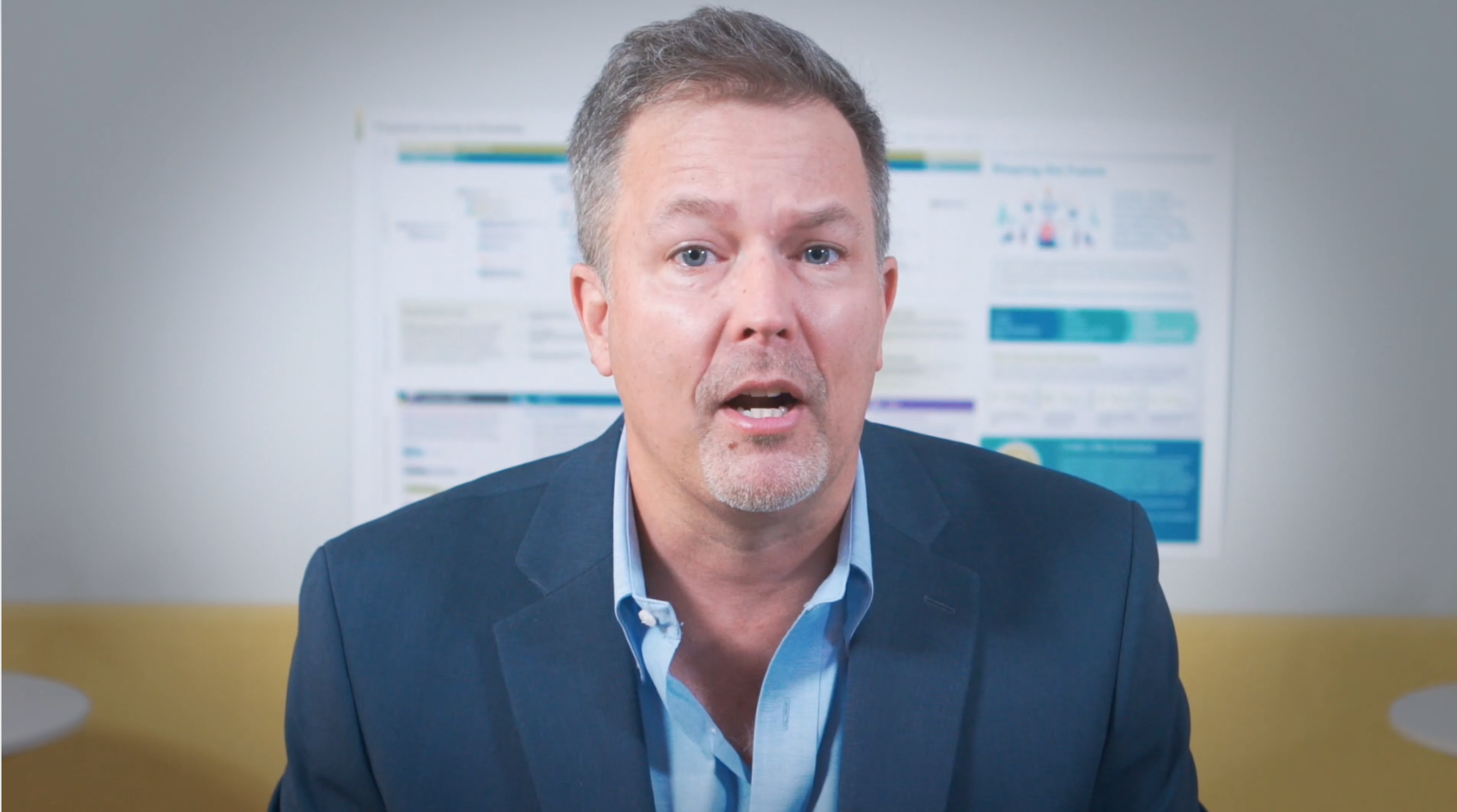
Chris told this story beautifully. I had him give me a few versions in the interview that I Frankensteined together, but he was great on camera.
What is the solution?
The solution is great design. Great design removes friction, saves time, and helps people achieve their objectives efficiently and beautifully.
Digital experiences should iterate over time based on the changing needs of users. The solution is software that is created with every conceivable user in mind - end users, employees, and management.
Why is Informed XP best suited to deliver that solution?
This is the fun part. We touched on a few different reasons.
Human-centered design is the best way to design digital interfaces instead of the traditional approach. IXP are experts in this agile or human-centered design. We decided not to use the words "agile" and "waterfall" in the video because it's too technical.
IXP is a diverse team with a wide range of experiences. Because of their extensive private sector work, they're able to identify and solve client problems differently than a traditional government contracting firm. They have a fresh perspective and are unbiased in their solutions.
IXP spends a ton of time in the research phase. Surveying users (end users, employees, management, etc.) is the crucial part of software development that is not focused on enough. Their product is a continuous loop of user feedback and software iteration.
One of my interview questions is always "What are 3 words you'd use to describe your clients?" The answers I got here included "Ambitious, Curious, Experts, Forward-thinking, Want To Improve."
Interestingly, the interviewees came in expecting to answer a different question. They thought I would ask "What are 3 words you'd use to describe Informed XP?" This is a big distinction!
Clients don't care what you do, they care what you do for THEM.
By asking interviewees to describe their clients, that potential client watches the video and thinks "Yeah! We're ambitious and curious and forward-thinking. This company GETS US. Let's hire them."
Final Thoughts
Relevant b-roll came from our subscription to Videoblocks which is an amazing resource for around $200 per year. Don't think we paid for a single one-off clip.
We considered using some of the company's project files: wireframes, PDFs and stuff, but ultimately it was too detailed and intricate.
These b-roll clips last for 2 seconds max so they need to be simple. We also wanted to focus on the core message: "You need to design for HUMANS" so we used a lot of portrait-style stock footage. Some examples of clips we used:
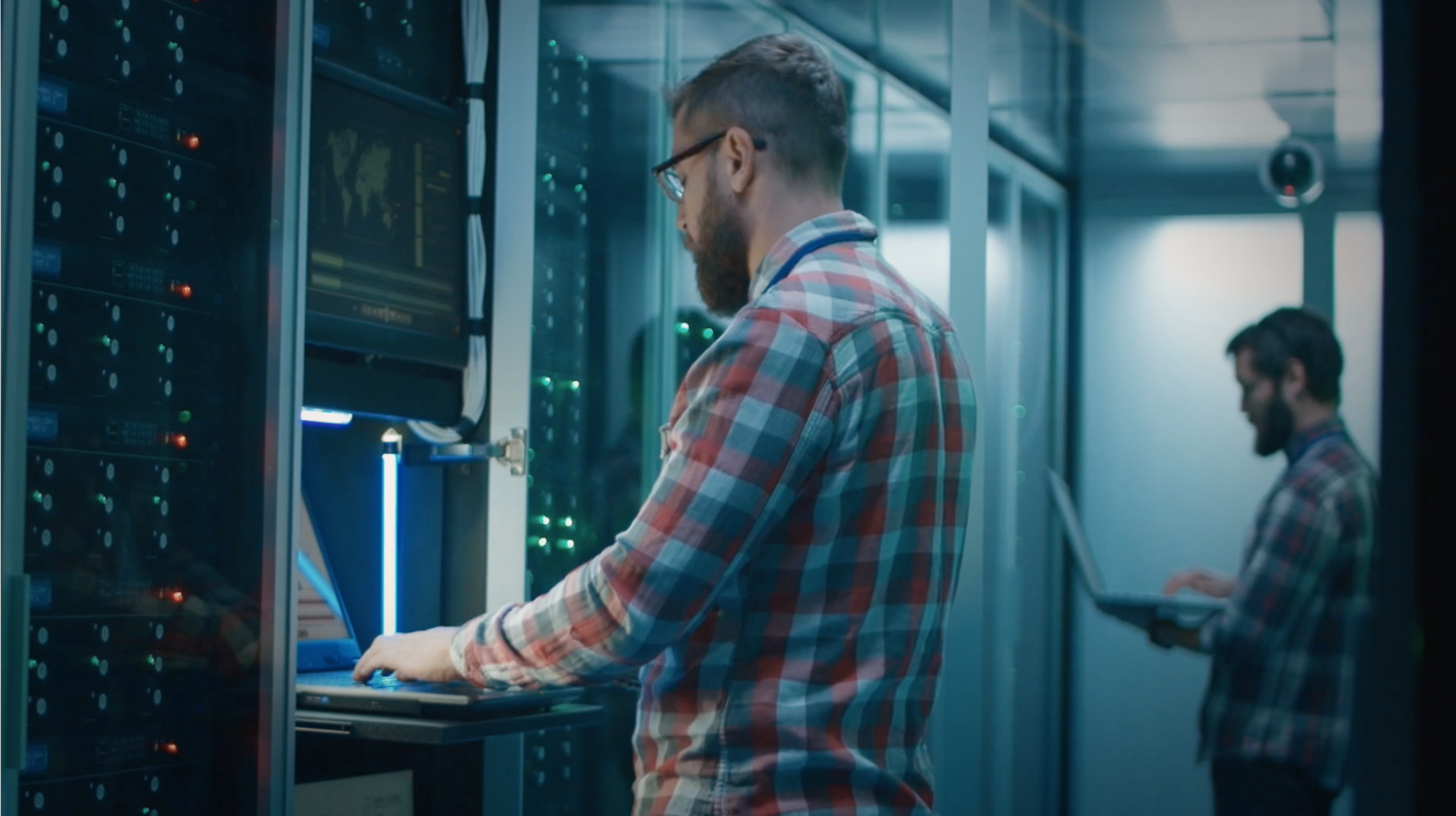

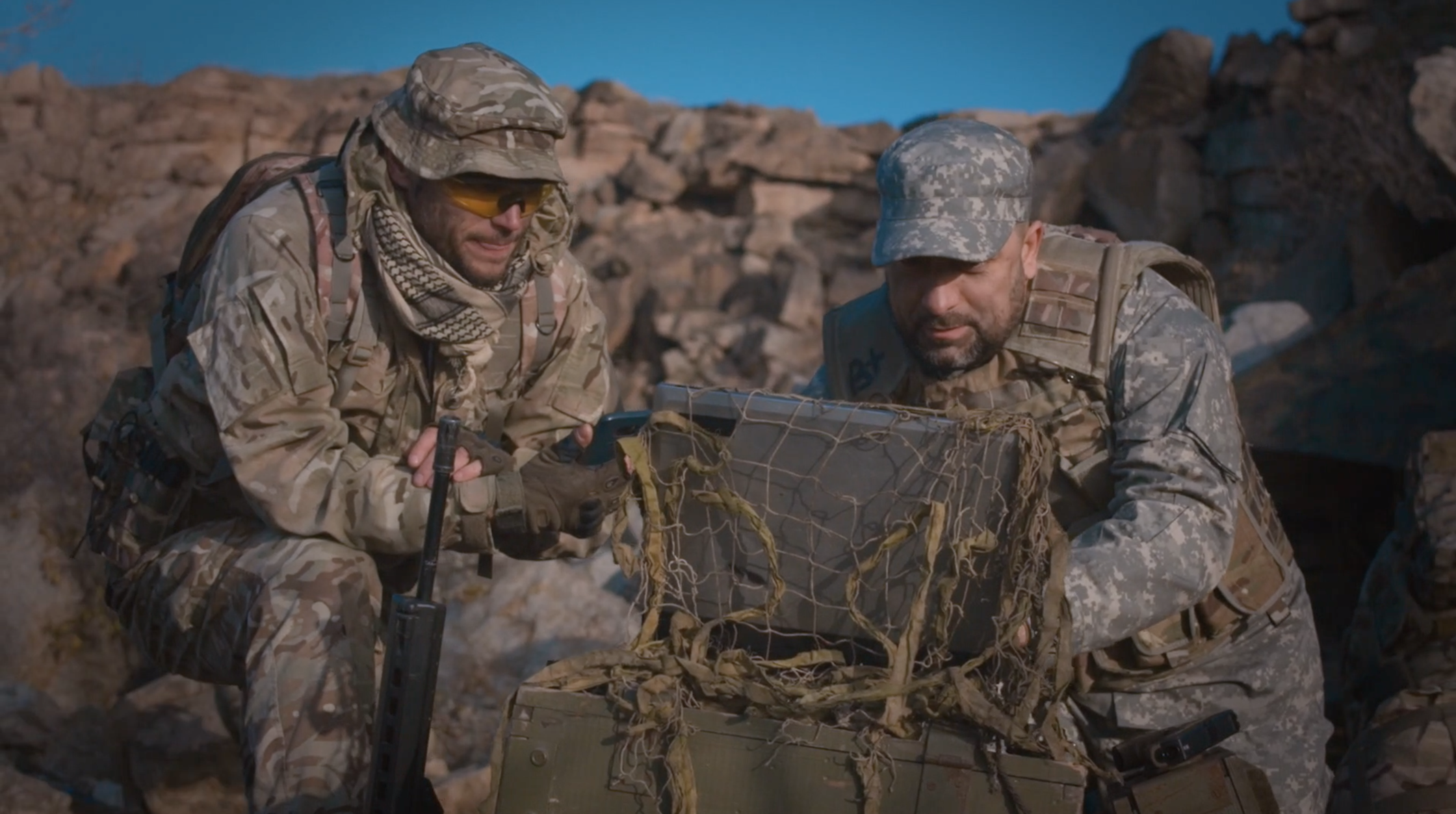
Music track is Last Man Standing from Audiio which is another great subscription stock music service. It's only $200 for a LIFETIME membership. That pays for itself with 3-4 tracks.
I wanted a track that was synth-y to fit into the tech narrative, but needed a rock song with a solid groove to keep the pace moving. I'd describe this song as "synth rock Black Keys."
Transitions and titles came from LenoFX who makes incredible FCPX plugins. I added a few glitch transitions and a glitch logo animation which fit the genre.
A captions version was also delivered. Any time the audience is web, you have to assume that viewers are watching without sound. If they have headphones on, awesome! But we can't assume that's how they're watching. I burned in the captions

BIG TEXT is important for a few reasons: it helps to cover interview cuts, it emphasizes key points and phrases, and it helps deliver the message if the viewer is watching with the sound off.
Hope you learned something from this breakdown! If you'd like to discuss how a video will get your company credibility in a new industry, shoot me an email - patrick[at]patchbaymedia.com